Kamila Zawadská, who moves between art, skateboarding, and nature, has created unique trophies for the Běhej lesy races in the Czech Republic and Behaj lesmi in Slovakia. In the interview, she describes how wood and running maps guided her creative process, why ecology is important to her, and how seamlessly joy from running can be intertwined with art. These trophies are not just symbols of victory but also artistic objects that celebrate the symbiosis between humans and nature.
How did you react when you were approached to create trophies for the Běhej lesy and Behaj lesmi projects? Did you jump right into it?
I was approached by Kuba from the Běhej lesy project; we met at an art exhibition where I was showcasing my work. I had displayed carved pieces of wood adorned with pyrography, which is essentially drawing with heat. That caught his attention, and right there at the exhibition, he asked if I would be interested in making trophies for Běhej lesy and Behaj lesmi. I was thrilled. I thought it would be great to see my work take on a new dimension. I gave him my contact information, and a few days later, he reached out to me. We met with Eliška, and together, we finalized the concept, which would revolve around working with wood.
„
I think people are becoming more discerning—they don’t want just any things. They want something with deeper meaning. This isn’t just about trophies but also about the design of everyday items at home.
What inspired you when designing the trophies?
From the start, I expressed that I wanted the natural grain of the wood to be respected in the trophies, so I didn’t want to overshadow what nature had already created. It was clear that each trophy would be unique, as I would let the wood's grain guide me. Another source of inspiration was running maps. It's not about directly transferring specific maps onto the wood, but rather being inspired by the running maps and their symbols, which could be incorporated into the design.
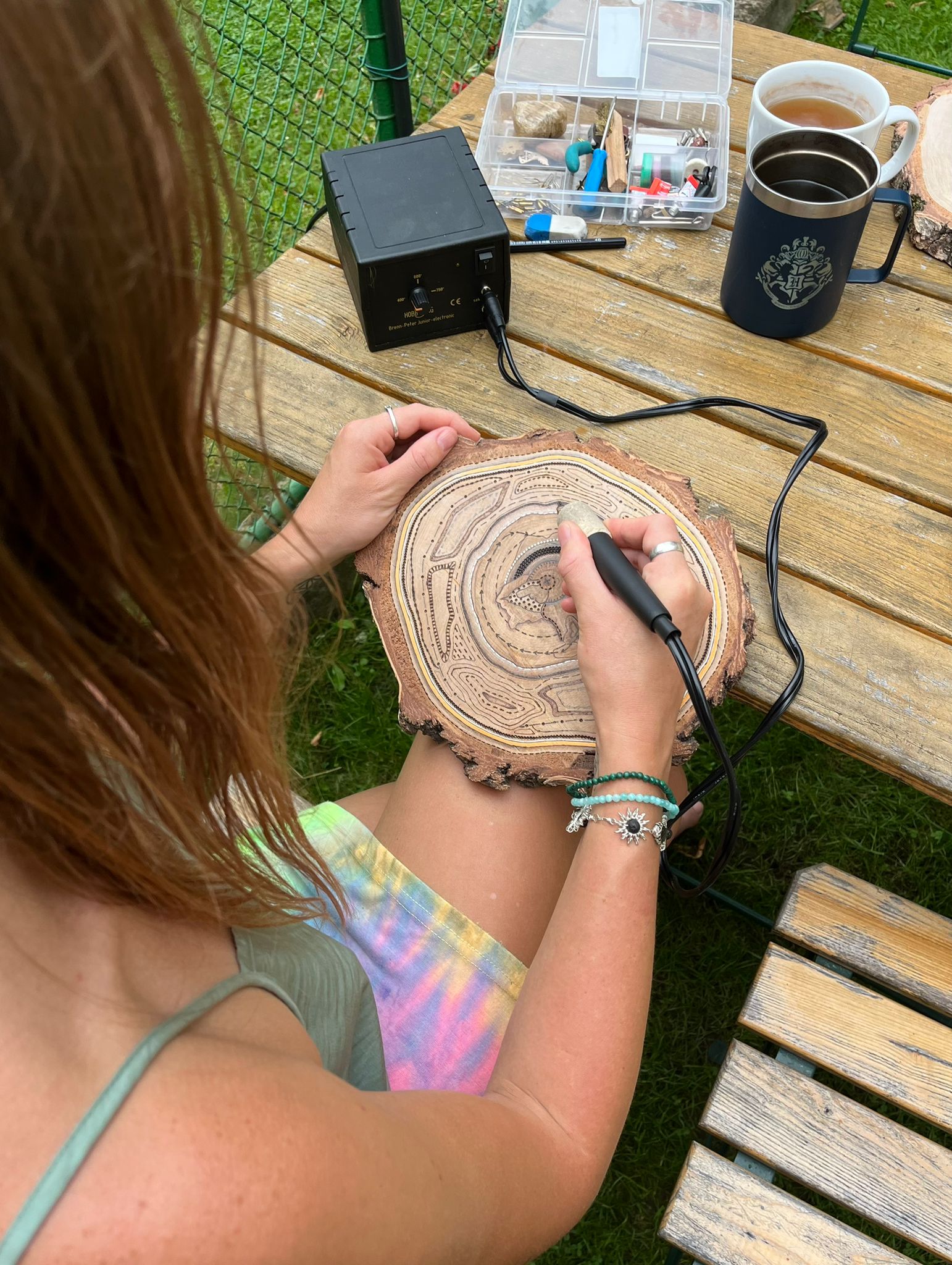
How would you describe the trophy to someone who can't see it? What was the main message or idea you wanted to capture in these trophies?
I looked at the trophies from previous years, and they were all designed to be placed on a shelf. But not everyone is a "shelf person," so I thought the trophy could be something that someone could hang on the wall instead. I came up with the idea of using wooden rounds, pieces of wood cut into slices about 2 cm thick and around 20 cm in diameter. I sand the wood until it's smooth, and then, using a pyrography pen connected to a pyrography station, I burn the necessary design into the wood with heat. I create patterns inspired by the wood grain and running maps, which end up looking like a sort of unpolished mandala. On the other side, there’s text with the logo. To differentiate between the first, second, and third place trophies, each one has a stripe marked with gold, silver, or bronze acrylic paint. Apart from the hanging hook, that's the only non-natural element. The wood comes from our garden in the Krkonoše Mountains and the Vysočina region, from trees that had already died or were diseased, so in this way, they found a new purpose. I wanted the trophies to be as eco-friendly as possible, with minimal waste.
>>> Read more about the Běhej lesy project or the Slovak Behaj lesmi.
Tell us a bit about the pyrography technique. How does it work?
I have a special pen with a variety of tips. The pen is connected to a pyrography station, which is powered by electricity, heating the tip to anywhere from about 200 to 750 degrees Celsius. I usually work at temperatures between 400 and 500 degrees, depending on the hardness of the wood. So, instead of drawing with a pencil, I draw with heat, which is more challenging. Mistakes can't be erased, and you have to be careful not to burn yourself.
So the trophy serves as a standalone piece of art that anyone, even if they didn’t run the races, could hang on their wall.
Exactly. I liked the idea of a subtle reminder of victory. It doesn’t necessarily look like a trophy; it’s more like a piece of art made from nature—specifically from spruce, elm, and birch.
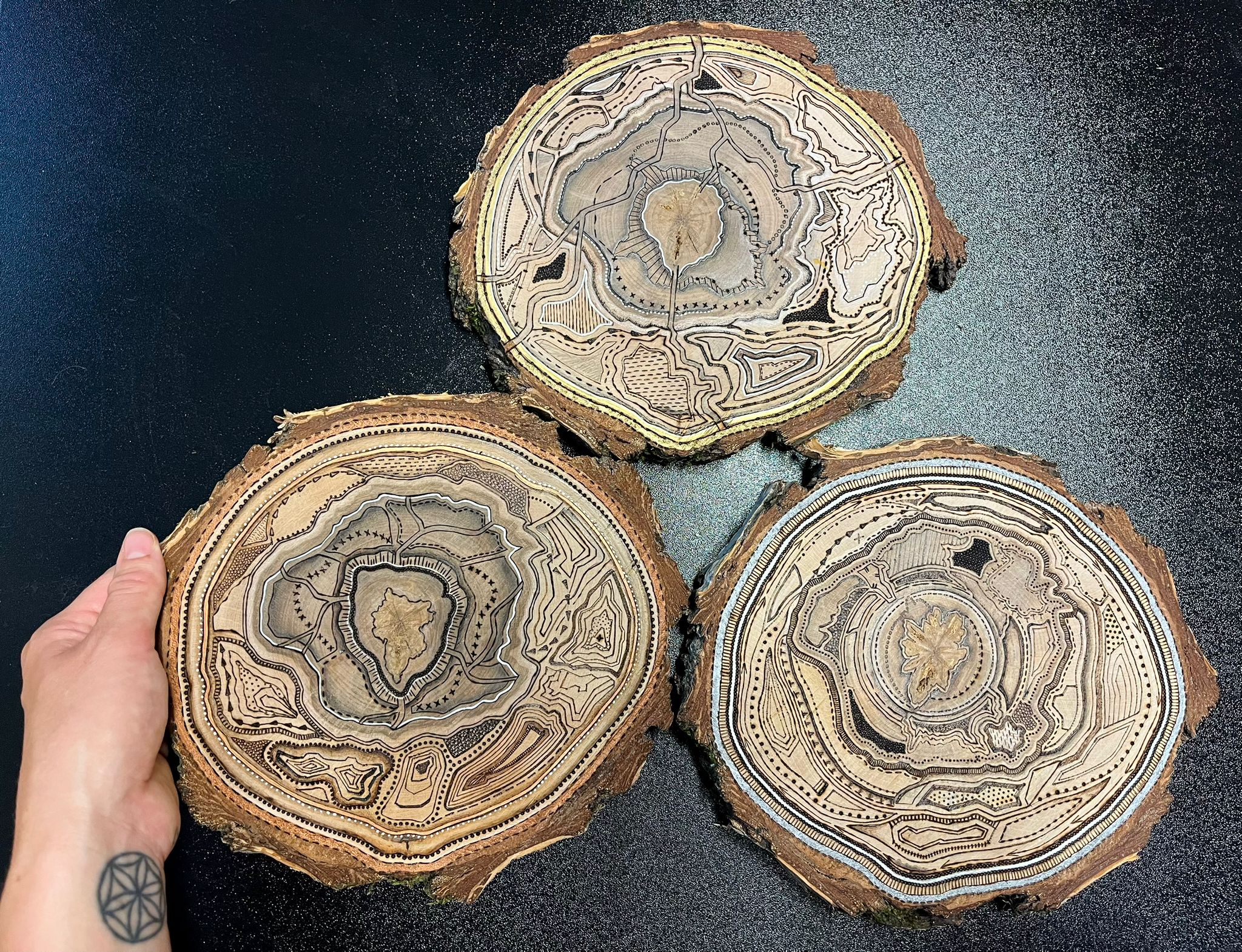
Is it important to you that your work has minimal environmental impact?
The whole Běhej lesy project is about enjoying time in the forest, in nature, and it would feel strange if I didn't align with that. Both the run and the trophy are meant to celebrate nature together.
I know you're actively involved in skateboarding and have even won some awards. Do you pay attention to how trophies look from an artistic perspective?
Most of the time, I received vouchers covered in countless sponsor logos and crazy text—nothing I’d want to display at home as something visually pleasing. So, I wanted to create something different, an artifact. The organizers of Běhej lesy even agreed to place the logo on the back of the trophies. We'll see if it works; I hope the participants will like the trophies.
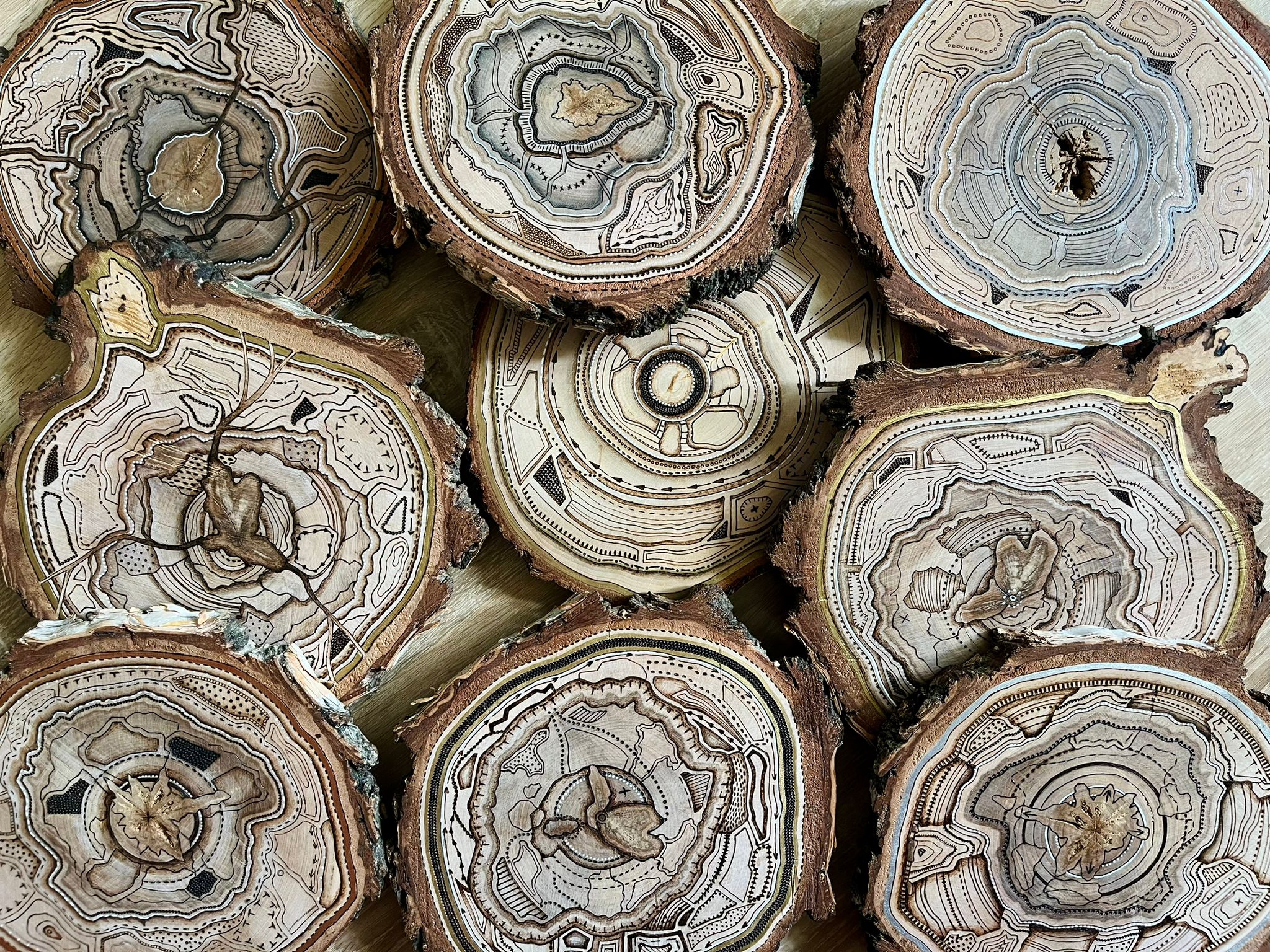
By placing the text on the back, the trophy loses that overt sense of boasting. It subtly reminds of achievements through its aesthetics.
That's exactly the point of the artifact. We didn’t want trophies like the well-known plastic cups. From the beginning, I wanted to merge art with sport. I initially agreed on this with Kuba, and later, Eliška, who strongly supported this concept, confirmed it. Hopefully, people will be satisfied that it’s not an in-your-face “I won!” statement. There will just be that colored stripe to indicate placement. I've only received two medals that were aesthetically pleasing—they were from the Hororamp skate contest. They had a subtle radius hinted in the circle and color for placement. At first glance, they look like aesthetic objects without inscriptions. These are the only medals I have displayed; the rest are somewhere under the bed. And also beautiful trophies from the Bowl Bar Contest, which were designed by Daniel Dauš.
Do you feel that the aesthetics of medals and trophies are gradually changing? What do you think is driving that change?
In the skateboarding world, many skaters are creators—they make music, write, and there are many artists among them. Skateboarding, in a way, pushed me to deepen my own creative efforts. It's true that recently, the aesthetics of awards have been changing. Trophies are now reminders of the place, the people, the experience—not just the sport. For example, in the Czech skateboarding scene, like the Czech Skateboarding Cup or the Czech Championship, the prizes used to be those tacky paper certificates. But then there’s Mystic Sk8 Cup, where you get beautiful glass trophies. Riders take home quality Czech glass, which changes its design a bit every year.
I think people are becoming more discerning—they don’t want just any things. They want something with deeper meaning. This isn’t just about trophies but also about the design of everyday items at home. We’re overwhelmed by consumerism and need to start surrounding ourselves with things that are more special, intelligently and well-made, and that perhaps tell a story. And that’s a great development.
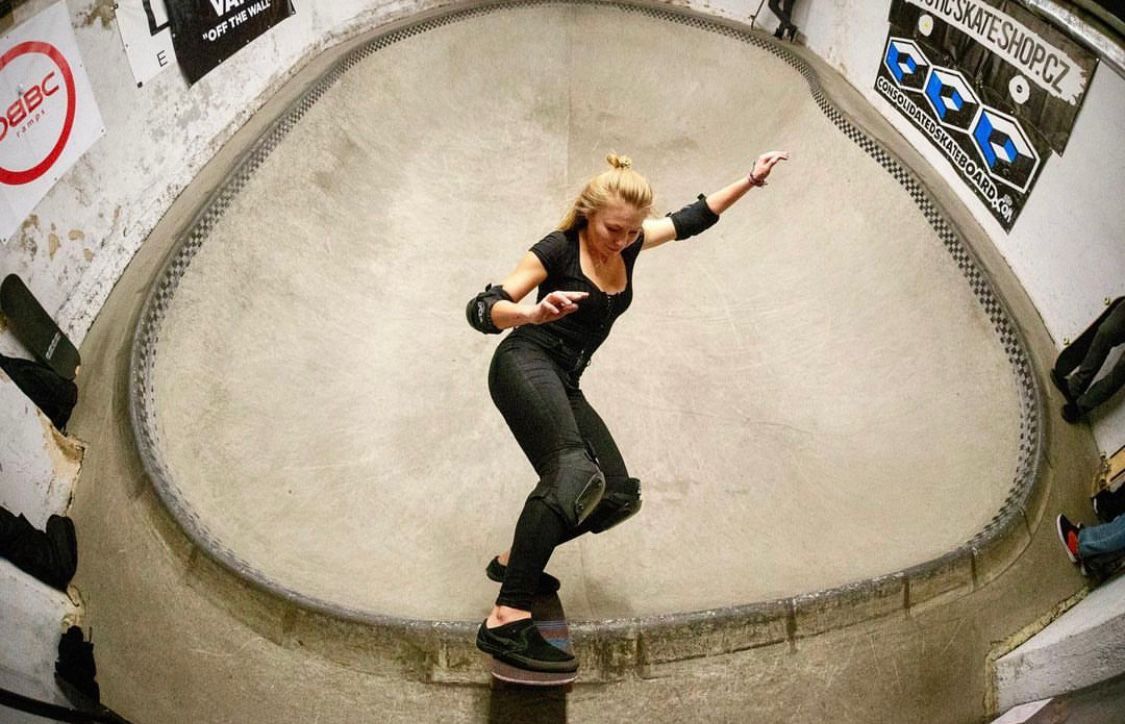
You skate, but you also worked on a project where you designed graphics for skateboards. What was that about?
I created a skateboard design for Charge Skateboards. It was for a skater named Anička Růtová, who also surfs. So, the skateboard had surfer-themed artwork on it. Her team wanted to give her the deck as a thank-you for riding for them. They reached out to me specifically because they wanted another woman from the skateboarding scene who actually skates to create the design. It was a way to support female skateboarding in two ways.
So, in the skateboarding subculture, you're known for your artistic work as well?
Yes, back in the day in the Czech Republic, there were few girls skating, so it wasn’t too hard to find me. It’s known that I often reflect skateboarding in my artwork. The number of women in skateboarding has improved since then. Since skateboarding became an Olympic sport, there has been a rapid increase in younger girls getting into it.
I feel like whenever I pass by a skatepark, I mainly see boys skating.
We’re still outnumbered by the boys. But when I started, there were virtually no girls skating. Seeing a girl at a spot was a small miracle. Lately, things have been changing, and boys are generally supportive of girls. However, in some places, there are still certain skaters who feel it’s their exclusive domain and they make it known.
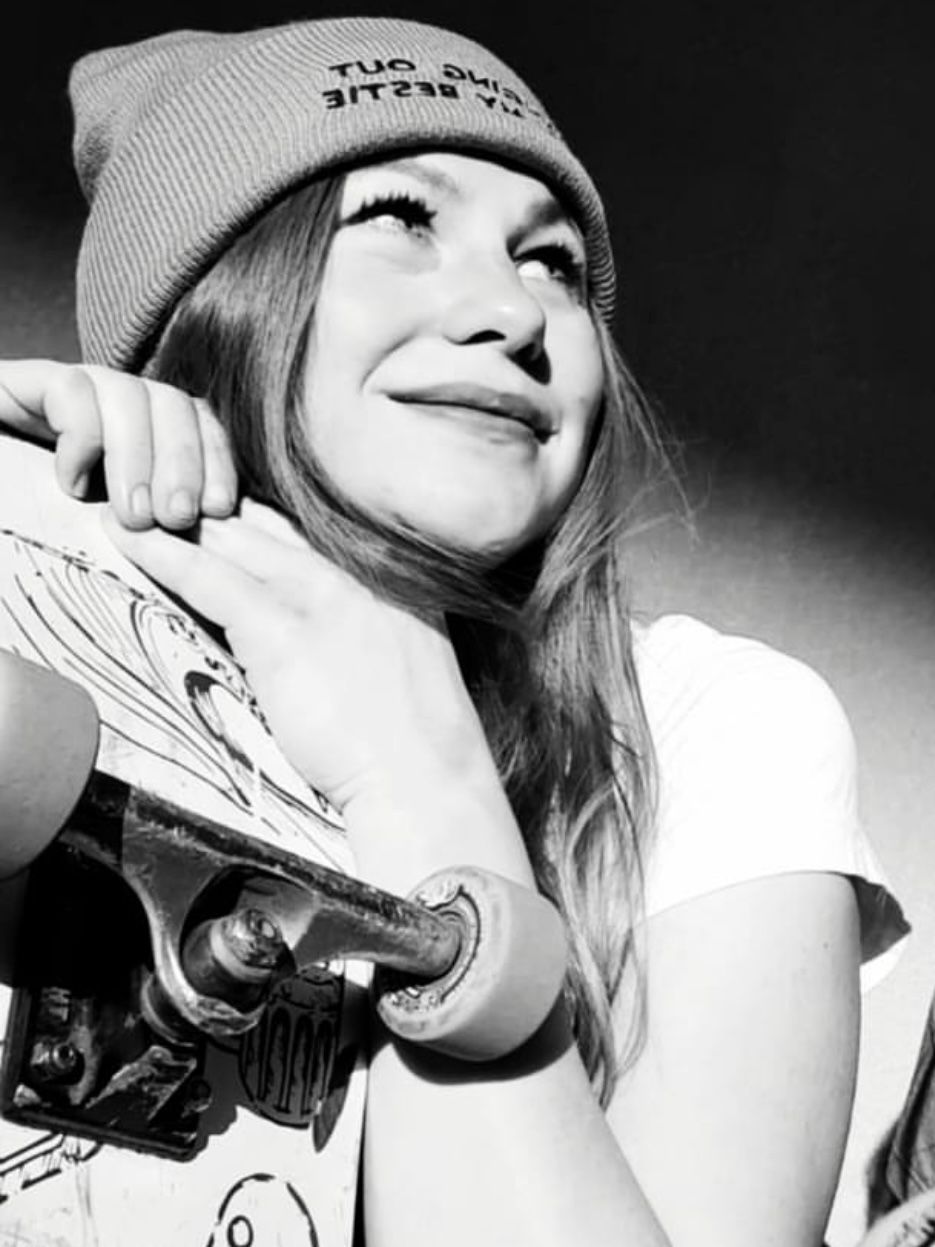
Wouldn’t it be interesting if there were skateparks exclusively for girls?
There are events specifically for female skaters. For instance, Girls Spin Skate Wheels and Female Shred organize sessions solely for girls. Girls Spin Skate Wheels even creates opportunities for female artists involved in skateboarding. They host exhibitions that showcase artistic creations along with friendly skating sessions. For example, there have been events at exhibition centers that combined art displays with breakdance and rap performances. Exhibitions have also been held at the riding arena on Císařský Island, paired with workshops and barbecues. It was a lot of fun. Boys were welcome, but it was primarily for girls. There are also schools like Spot Skate Club that offer skateboarding lessons specifically for girls who might feel shy around boys. Additionally, the number of female skateboarding instructors in the Czech Republic is increasing, which is fantastic.
What do you focus on in your artwork when it's not related to skateboards?
Lately, I've been concentrating on pyrography. I also work with other artistic techniques like painting, graphics, and engraving. Currently, I have a project in mind where I want to explore the harmonious integration of wood and stone. My themes are quite diverse; I’m open to various challenges, but most of my work is inspired by personal experiences, feelings, and the beauty of nature. I often create small pieces that help me capture moments, places, and details from nature that I want to preserve and remember. I create a lot for myself out of artistic impulse, but I also find great joy in sharing my art with others. Recently, my work has been significantly connected with skateboarding, so I’m glad to be reaching new communities and areas in the world of sports through projects like Běhej lesy.
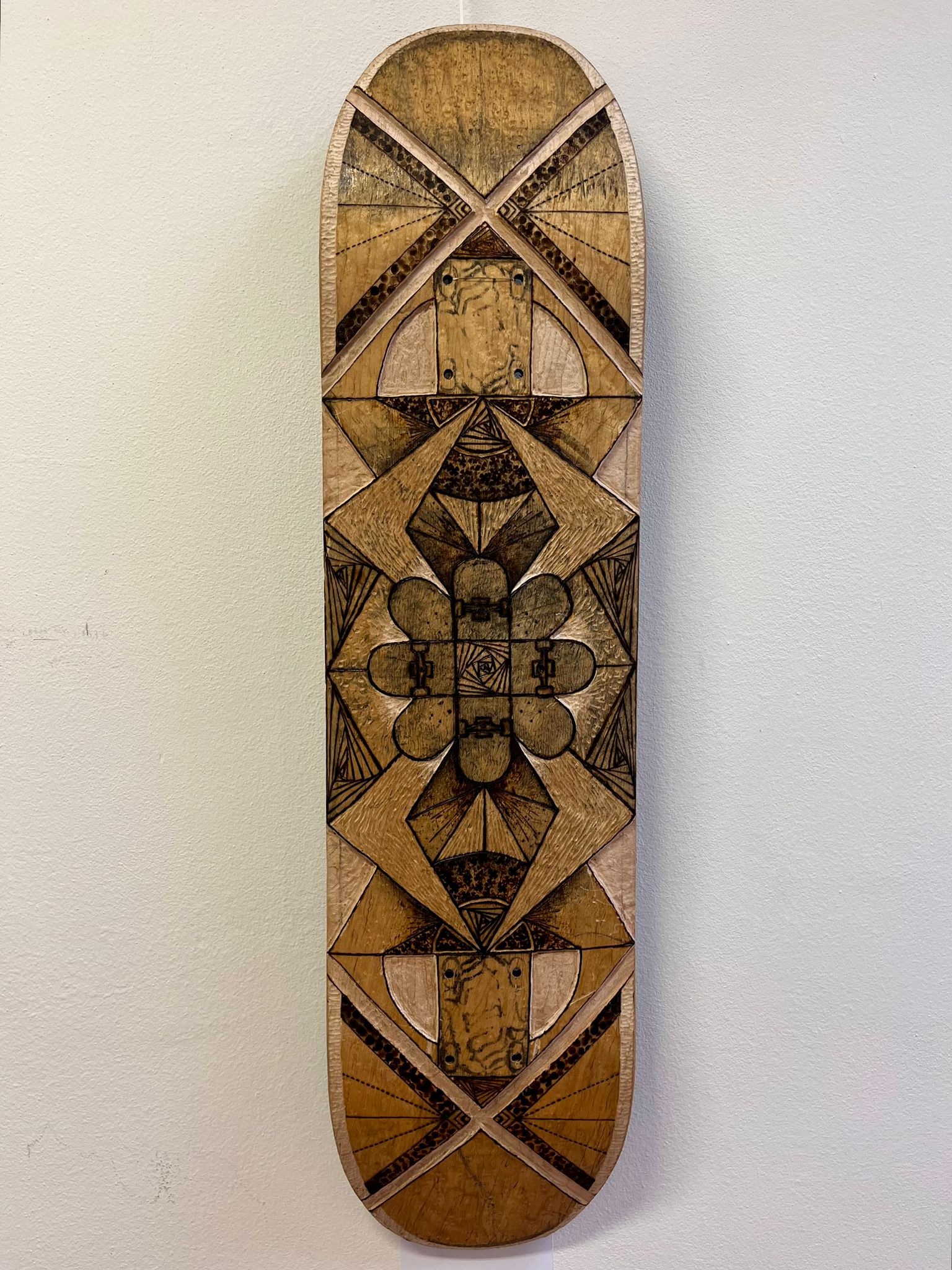
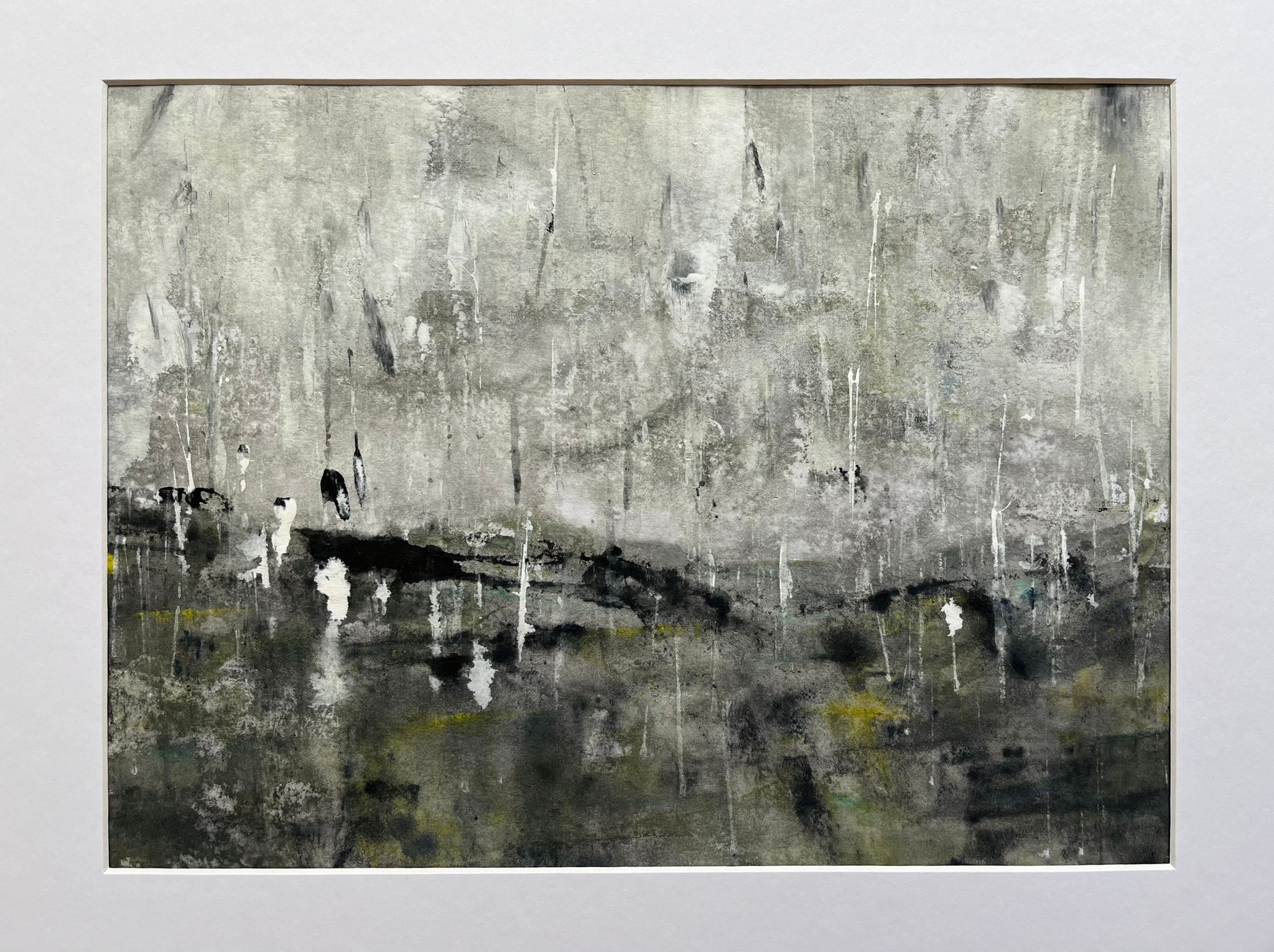
When it comes to combining art and sport, do you have any other experiences?
I enjoy upcycling skateboards, whether they’re mine or found ones. For those that can no longer be ridden, I add my own drawings, paintings, and so on. For example, I’ve painted endangered flowers or Venus to celebrate femininity. I love the process of giving a skateboard a new purpose, breathing new life into it once it has lost its primary function.
It’s interesting to note how many people from this subculture are actively involved in visual arts. Skateboarding is quite a creative pursuit. It’s also about body culture; the aesthetics of how one skates are important. The movements should be smooth, with proper hand placement, and the skater should look graceful and stylish. The perception of the surrounding space also changes. When someone sees a piece of the city or nature, they subconsciously imagine how they could skate it. A good skater has a high degree of creativity.
Do you walk down the street thinking, “That’s a great railing, if I had a skateboard, I’d skate it”?
You start to view the city through a different lens. You think about where to get a run-up and how to tackle it. Often, just imagining it is enough for me. I’m not a rebel and I know some spots are not skateable or beyond my skills, but it’s enjoyable to envision it.
What do you think about the changes at Vltavská?
That’s a project by U/U Studio. They took a space with potential and transformed it into a playful, interactive area that’s also visually appealing. It’s not just for skaters but also for bikers. I like how it was done, though there’s a bit of an issue with gravel after winter. Gravel is a skater’s nemesis. But I understand it needs to be spread. They also did a nice skatepark in Řeporyje, which is great for beginner riders and younger skaters who are still supervised by their parents.
And how about nature? Do you spend time outdoors?
Definitely. Nature is very important to me. When I moved to Prague, I was a bit overwhelmed. I usually find my favorite spots connected to nature. I’ve found my own places here.
Which ones are your favorites?
That changes over time. Recently, I’ve been enjoying the area around Rokytka. It’s designed for people but still has a bit of wilderness. At the beginning, Kinského Gardens were a lifesaver for me.
How about running? Are you planning to participate in Lesy?
I used to run. Then I started skateboarding and injured my knees, which unfortunately doesn’t go well with running. But I’m waiting for my knees to heal so I can start again, maybe with a dog. Running is a great way to relax. Your mind works differently while running compared to walking. But for now, my participation in Běhej lesy and Behaj lesmi will be limited to my trophies.
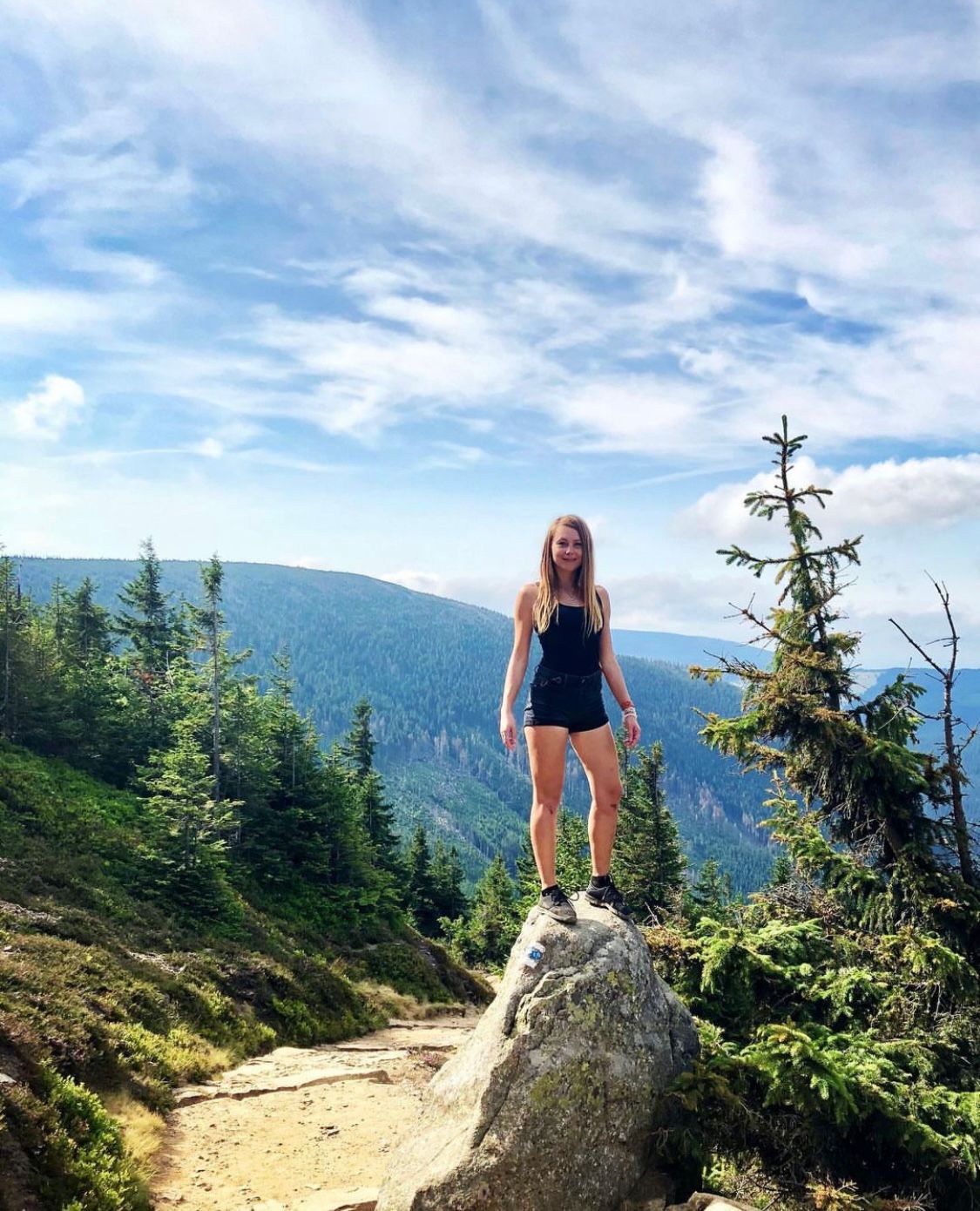
Kamila Zawadská pochází z Hané. Přes Hradec Králové a Litomyšl se dostala do Prahy. Odmala propojuje své dvě vášně, sport a umění. Říká o sobě, že je výtvarnice se spoustou plánů a snů. Poslední roky je její největší radostí skateboarding se vším, co k němu patří. Absolvovala Katedru výtvarné výchovy na Univerzitě Karlově a v současné době je učitelkou výtvarného oboru na ZUŠ Ratibořická.
Její další uměleckou tvorbu najdete na Instagramu @z.kama13, tu skejtovou pak jako @Kamila. zaw.




